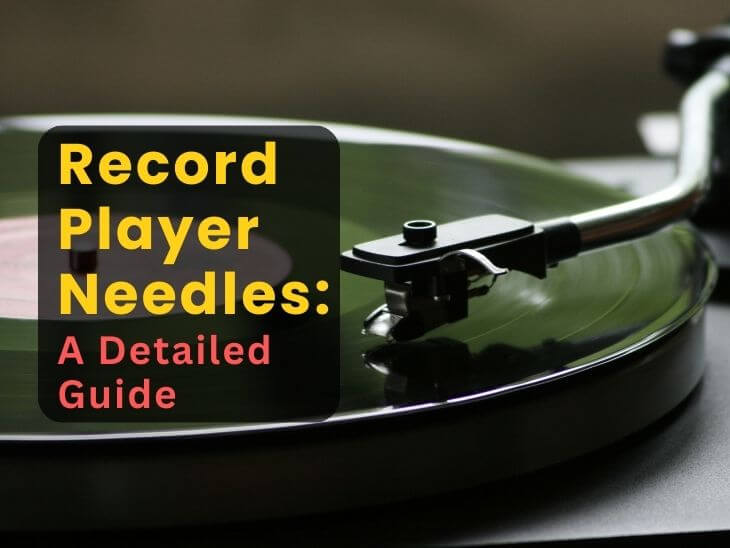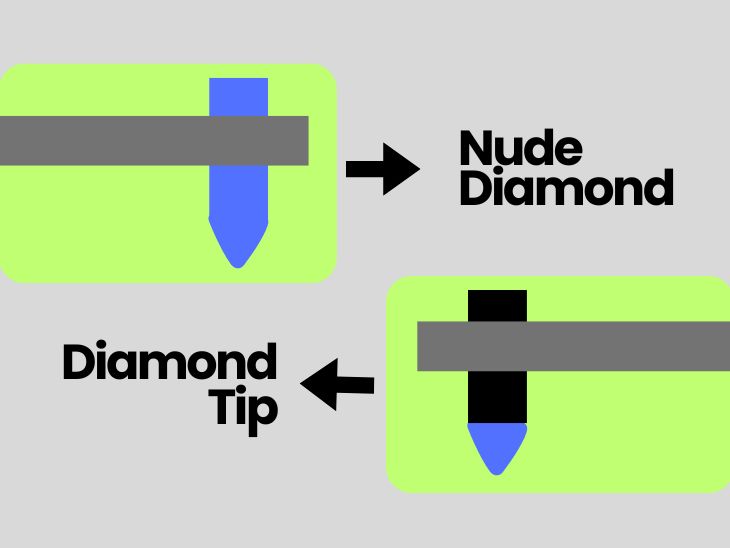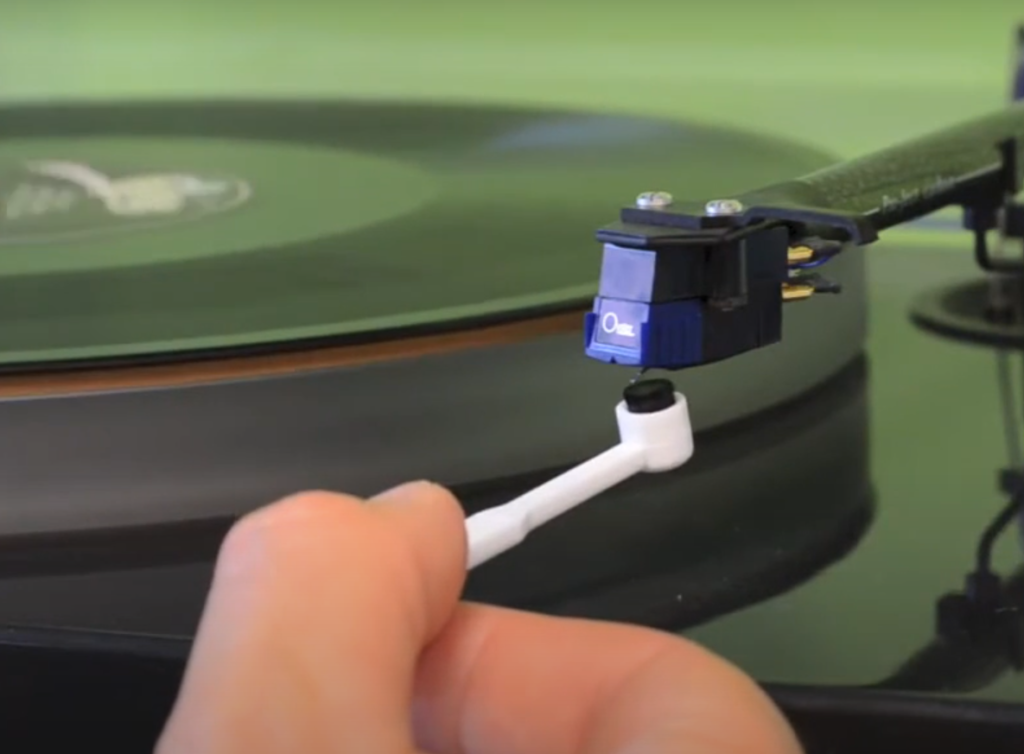Record Player Needles: Explore The Best Detailed Guide
The record player comprises various parts and each part works in tandem. One such is a needle, commonly known as a stylus, which plays an important role in producing audio from the record.
The first time, I replaced a stylus on my turntable, it was a great learning experience. I learned about different types of needles, their characteristics, and how they impact sound quality.

In this article, I have explained about needles and its types in great detail and how to take care of your turntable stylus in order to prevent them from damage.
What is a needle in a turntable?
The stylus, often called the needle, is an integral component of the cartridge, mounted at the end of the cantilever. Its primary role is to trace the grooves engraved into your vinyl records.
The stylus serves as the first point of contact for your spinning record, and it kickstarts the whole process of producing the sound that you hear.

How does a record player needle work?
Before going forward, first, we need to understand the role of the stylus in sound production.
As the stylus moves through the grooves on the record, it starts to vibrate the cantilever which is like a tiny arm on which the stylus is attached.
At the other end of the cantilever, there’s usually a magnet. The vibrations traveling through the cantilever cause this magnet to move. When the magnet moves, it induces a small electric voltage in coils nearby. These coils are like tiny copper wire loops.
Now, these small electrical signals are quite weak to produce sound. To make them strong, they’re sent to a preamplifier which boosts these signals and makes them strong enough to produce music from speakers.
Record Player Needle Types
The stylus can categorized into different types based on the material construction and shape.
A. Based on the material construction
1. Nude Diamond: In this type, the entire needle is crafted from a single piece of diamond, with no metal shank. These needle are more expensive but have a longer lifespan. They’re also lighter in weight as compared to diamond-tip.

2. Diamond Tip: This stylus consists of a diamond tip mounted on a metal shank. While affordable, it has a heavier build that exerts more pressure on your vinyl records and increases the wear and tear of the record.
B. Based on shape
Point contact types
1. Conical (or Spherical): The conical-shaped needles have spherical tips with large radius. It is rounded from all sides. It is the most common type of stylus and present in entry to mid-level turntables.
The spherical type makes less contact with the surface, it lasts longer. It is most widely used by DJs for scratching, back-spinning, and other DJing stuff.
Due to their larger surface area, they make less contact with the groove surface. As a result, they might not capture higher frequency sounds as effectively as other stylus types.
2. Elliptical: Elliptical-shaped stylus has two radii (front and side) which help to track the grooves of the track more precisely than conical styli. It sits much deeper in the grooves.
The front radius is wider which helps them to stay at the center of the groove and the side radius is narrower which helps to capture high frequencies. The audio quality from this type of needle is more accurate as it touches the larger area of the grooves and captures more depth.
The main drawback of this needle type is, that it wears out more frequently due to a larger contact surface area.

Line contact types
3. Hyper Elliptical (or Line Contact): The hyper elliptical often called a fine line has a longer vertical surface that makes contact with the grooves. It tracks grooves even more precisely than elliptical needles so it produces a much better response thus we get better sound quality. They are hard to manufacture and expensive so they are present in high-end cartridges.
4. Micro-Ridge (or Micro Line): The micro-ridge needles are the most accurate while tracking. They are computer-designed and are similar to the shape of the original master-cutting diamond stylus. They are expensive and hard to manufacture but produce the highest quality sound if they are aligned with precision.
Which is better, Conical vs Elliptical?
When it comes to needles, there’s no one-size-fits-all. Your choice depends on your specific needs and preferences. Here’s a breakdown to help you decide:
Conical Needles: These are like all-purpose stylus’s. They might not have the highest frequency response, but for most listeners, the difference is hardly noticeable. Conical needles are also favored by DJs for their durability and compatibility.
Elliptical Needles: These are for the serious audiophiles out there. They have a more detailed and accurate sound quality. Elliptical needles are known for capturing the depth of the records, making them an excellent choice if you’re all about the best sound.
In the end, it’s not about good or bad needles; it’s about what suits your listening style. Consider the pros and cons of each, and you’ll find the perfect needle to match your musical taste and equipment.
How to clean the record player needle?
Believe it or not, the stylus can get pretty dirty. As it moves along the grooves of your records, it tends to pick up dust, grime, and gunk. If you touch the stylus with your fingers, the natural oils on your skin can transfer to the cartridge and make things worse.
An unclean stylus can lead to various issues like damaging the stylus itself, causing wear and tear on your records, and even making your music sound distorted.
For all you audiophiles out there, it’s essential to make cleaning vinyl and stylus a habit before listening to your favorite record. There are different ways to get the job done, but here are a couple of effective methods to clean a needle:
Using a Stylus Brush: This is the simplest method. All you need is a stylus brush, which you can find online. To clean, gently brush the stylus from back to front. Just be careful not to brush it sideways, as that could damage the cantilever.

Using Gel Cleaner: You can also find gel-based cleaners in the market. The process involves placing the gel cleaner on the platter and moving the tonearm so the stylus dips into the cleaner. Do this three to four times, and your stylus will be nice and clean.
Conclusion
In conclusion, we can say that it’s the stylus that sets the journey of spinning records into the warm sound of vinyl we hear. It is always good to have an understanding of each component of the vinyl stereo system. This knowledge enables you to troubleshoot and resolve issues independently whenever they arise. The needle is an important part, it needs to be cleaned every time you play a record.
FAQ
DJs mostly use spherical-shaped needles as they are more suitable to perform transitions like scratching and cueing and prevent the record wear and tear.
No, it is advisable not to touch the turntable needle as moisture and oil from our fingers gets accumulated on the needle and damages it.
This depends on many factors such as the type of needle, the type of record being played and the maintenance of the record player. Considering these turntable needles can last for 300-1000 hours.
Yes, needles are dirt magnets so an unclean turntable stylus potentially damages vinyl records.